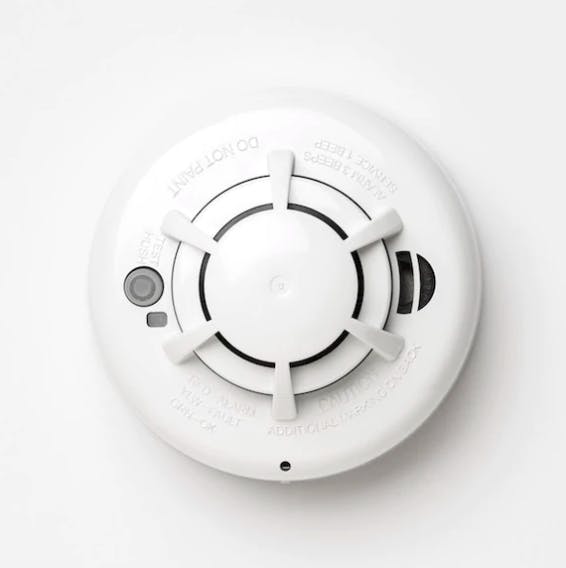
Although fire awareness and emergency preparedness has increased in the United States in recent years, much of it has come at great cost. Whether through human error, the failure of a fire alarm system, or a sluggish emergency response, a fire can rapidly get out of control and destroy property, ignite hundreds or even thousands of acres of land, and claim many lives.
To give an idea of how hard firemen work in the United States, according to the National Fire Protection Association, over 1.3 million fire-related emergency calls were made to responders. Quoting from the NFPA guidelines, the analytics company Lexipol breaks down the average response time for fire departments. Even with a fire alarm monitoring service at the property or rapid response times from those who call 911, it can take as long as ten minutes for a fully-staffed fire department to arrive at the site of a major blaze. Precious minutes can be added depending on the location of your local fire station. And this is nothing to say of the instinctual reactions people have in such disasters.
In some circumstances, alarm signals are ignored, batteries are purposely removed from smoke alarms, or information about fire exits in public spaces isn’t known. Just by looking at an interior space, you may not know what kind of fire protection has been put in place. Security and safety is touted as a priority and is often a positive feature of reputable venues and residential properties but not always. If you do not at least see emergency exits, fire alarms, fire extinguishers, and the like, then you may be in trouble.
Some of the worst disasters in history involved uncontrollable fires and a lack of emergency preparation. Unfortunately, even fully prepared fire stations could not respond fast enough to incidents such as these. Here are two such recent incidents that may sound painfully familiar.

Pyrotechnics Gone Wrong: The Station Nightclub Fire
It’s February 20th, 2003, and the hard-rock band Great White is performing at the Station Nightclub in West Warwick, New Hampshire. The nightclub supposedly tells the band’s tour manager that pyrotechnics were forbidden inside the club; the tour manager insists the nightclub said the pyrotechnic systems (called gerbs) were allowed. Whatever the truth, only a few seconds into their first song, their tour manager, Daniel Beichele, sets off a spray of sparks that instantly ignites the foam acoustic padding at the sides and rear of the stage.
Tragically, much of the audience thought this was part of the performance until thick black smoke filled the nightclub. Although the fire alarms were pulled and four exits were available, there were no emergency sprinkler systems, automated monitoring, or security of any sort. The panicked crowd rushed to the front entrance, leading to a stampede that caused numerous injuries and deaths by itself. The local fire department came as quickly as they could, but in the end, one hundred people lost their lives that night due to smoke inhalation, burns, or trampling.
Authorities performed an inspection of the building’s permits afterwards and discovered it had been exempt from an updated sprinkler system due to its age and occupancy change. Although they had been legally obligated to install one, it was delayed for undisclosed reasons. Blame was quick to be thrown around. The nightclub owners eventually served time in prison, but the only one to admit fault was Mr. Beichele. Many of the victims’ families found little fault in him, however, and many more across the country considered him to be a “scapegoat” for the incident. His fifteen year sentence to prison was shortened to parole, and he was released in 2008. If interested, you can learn more about the disaster from the NFPA here.

More Than Illegal: The Ghost Ship Warehouse Fire
Built in Oakland, California in 1930, no one would suspect this strange and filthy warehouse would become one of the worst fire disasters in the city’s history. The owner of the warehouse, Chor Ng, bought the warehouse in 1988 and leased the building to two men, Derick Almena and Nicholas Bouchard. In the lease, they declared the property would become an “artist collective” where theatrical sets and art workshops could take place.
This is not what the warehouse was used for. For $300 to $600 a month (a steal for living space in Oakland), up to 25 tenants lived in the space where “apartments” were divided by pianos, used furniture, windows, wood benches, lumber, trailer and trailer sections, and much more. Quoting from the fire chief of Oakland: “the fuel load inside was nothing short of incredible.” Unbelievably, such a space relied almost entirely on extension cords, and the power for the building even supplied two other business properties illegally. Carbon monoxide is a danger for so compact a space, but there were no carbon monoxide detectors. Despite the fire risk, there were no detectors for smoke or heat. And, obviously, no monitoring service or added security was ever considered by the owners. The property was being monitored by local building inspectors, but due to city laws could not enter the property without a court order. In fact, the building had not been inspected in over three decades.

On December 2nd, 2016, an electronic music concert was held at the Ghost Ship, which was filled to the brim with 80 to 100 people. No one quite knows what started the fire. Some reported a faulty refrigerator, but multiple agencies pointed out that it could have been almost any appliance inside the building. But by the time it was discovered, it spread so quickly that three men with fire extinguishers could not stop it. The inferno grew so fast, people on the second floor had almost no warning. So filled was the warehouse with debris that very few people up there escaped, having to crawl down a pile of wooden pallets. Those on the first floor had to stay close to the ground to escape the smoke.
Thirty-six people lost their lives in the fire, all of them to smoke inhalation. As the East Bay Times reported soon after, the firefighters that had come to extinguish the fire were shaken by the fact that they had not managed to save a single person from inside the warehouse that night. The owner of the warehouse is being sued by many of the victims’ families at this time, and the lease owner Derick Almena is currently awaiting trial after a mistrial in 2019.

Take Responsibility for Your Fire Safety With a Fire Alarm Monitoring System
One of the greatest takeaways from these two tragedies is that both could have been prevented long before they occurred with the right fire safety installation and fire security plans. Of course, it is doubtful your home is violating any property laws, but the attitude of proactive preparation can go a long way in protecting you and your loved ones from danger. Creating a plan is a great way to start, but the right hardware can make the difference in any emergency.
Consider alarm system monitoring for 24/7 peace of mind. Cove offers complete fire monitoring equipment and emergency alerts. Through a single access control panel inside your home, alerts are sent to 3a monitoring center. So day or night, if one of your alarms or sensors are tripped, depending on your preferences, Cove can call to check on you or immediately alert the local authorities of impending disaster.
Setting up a wireless monitoring system that will function perfectly is even available as an easy do-it-yourself option. Depending on the age of your house, you would be surprised at the age of your smoke detectors. Older models often do not have the quality and detection sensitivity required by insurance companies. Replace them with a smoke detector or two from CoveSmart.com, and place them in strategic locations in your home, such as kitchens, furnace rooms, and in hallways near bedrooms. For more information on when you should change your detectors check out our article that answers that question. Larger homes may require three or more smoke and carbon monoxide detectors per level. When linked to a monitoring security system like the Cove Touch alarm panel, you can even set each detector to tell you where in your home or business the smoke is being detected. You will be prepared for any fire emergency with the right tools and a bit of preparation!
